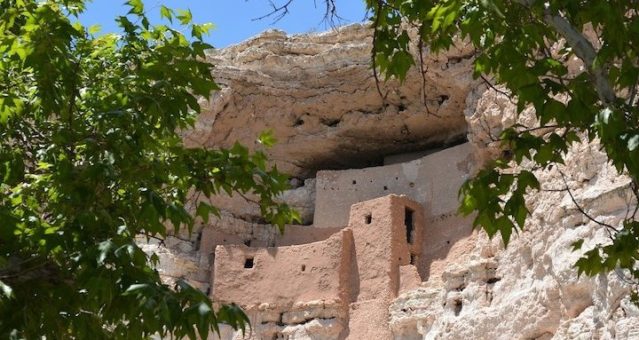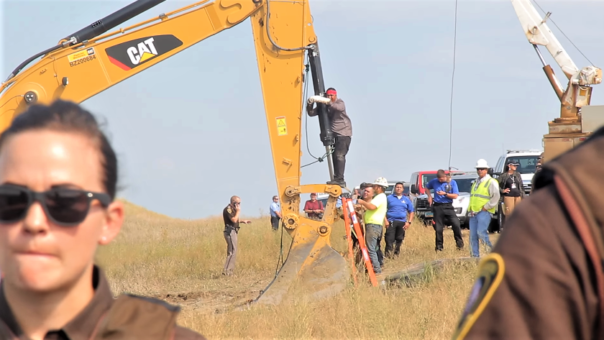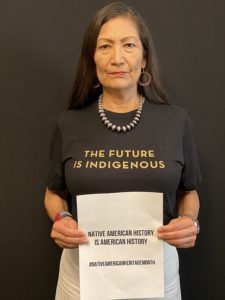American Indian Heritage Now and All Year Long

Anasazi dwelling in Arizona by Eric Simon at Pixabay
In November each year, Americans observe National Native American Heritage Month and American Indian and Alaska Native Heritage Month. US government agencies vary in their naming of the month recognizing the peoples’ cultures, histories and contributions.
After centuries of referring to indigenous peoples living in the United States as Indians, in the 1960s and 1970s the term Native American gained acceptance. Today some Native Americans prefer American Indian while others prefer to be recognized as a member of their tribe. (See this Smithsonian’s National Museum of the American Indian FAQ for educators.)
Visit the Native American Heritage Month site for links to US government resources, including the National Endowment for the Humanities’ EDSITEment! teacher’s guide, American Indian History and Heritage, which offers sections on teaching indigenous perspectives, preserving indigenous culture, indigenous languages, place based histories, lessons, resources and more. With so many resources available, this one is a good place to start, along with FAQ above.
The Native American Heritage Month site also shares Library of Congress resources, including Native American Newspapers: Studying the History through the Eyes of the Community by Danna Bell. Newspapers as early as 1828 are included with images of pages available. In addition the LOC hosts teaching resources on Native American boarding schools, providing images and a teacher’s guide.
You will also find a link to the National Archives which collects Federal agencies’ documents about interactions between the US government and American Indians. The documents included in DocsTeach offer primary sources and images. The Archives also provide teaching resources – many targeting high school students – for example, The Impact of Westward Expansion on Native American Communities and American Indian Voting Rights through History.

A Native American protester tries to stop the Dakota Access Pipeline. Creative Commons image licensed by Desiree Kane [CC BY 3.0]

Representative Deb Haaland celebrating Native American Heritage Month in 2019. She now serves as US Secretary of the Interior.
The SI museum site also offers a detailed Q&A section with information on terminology, policy & laws, land acknowledgement, cultures and much more. Included in the museum’s online exhibits is a photographic collection of ten treaties between the United States and American Indian Nations (with transcripts). The selection ranges from 1778 to 1868 and is representative of the 374 treaties that were ratified between the United States and Native Nations.
The US Census Bureau provides Facts for Features: American Indian and Alaska Native Heritage Month: November 2023 which can be helpful in math as well as social studies classes with its statistics on population, housing, employment, and much more. The article’s introductory paragraph is a helpful summation of the month’s development, going back to 1916 when New York first observed Native American Day due to the years of work by Red Fox James, a member of the Blackfeet Nation.
This page from the US Senate summarizes the decades-long evolution of National Native American Heritage Month. The US Census Bureau’s Stats for Stories page for Native American Heritage Day 2023 on November 24 offers statistics as well as links to other US government resources.
On its webpage explaining National Native American Heritage Month, the US Department of the Interior’s Bureau of Indian Affairs outlines the history of the yearly observance and includes its 2023 theme, Celebrating Tribal Sovereignty and Identity.
Beyond US government resources
National Geographic’s Native American Indian Month collection includes maps and articles with grade and reading level designations. Resources range from a map of migration via the Bering Land Bridge to an article about the Indian Removal Act of 1830.
PBS Learning Media also offers brief videos and lessons on Native Americans here. A 2022 PBS video, Land Back: The Indigenous Fight to Reclaim Lands, features Cheyenne Bearfoot, an Indigenous woman, exploring Indigenous land stewardship practices and reaching back to forced removal and genocide as well as outlining current efforts to return lands to Native Americans.
The November 24, 2023 NPR Morning Edition interviews Yale professor Ned Blackhawk in its story, “Native American Heritage Day honors Indigenous people, but it’s falling short.”
In Which Indigenous lands are you on? This map will show you, NPR shares Canadian nonprofit Native Land Digital’s website which lets students discover where Indigenous tribes lived in North America and beyond. The website includes a teacher’s guide along with other resources.
Students can learn about the American Indian Movement (1968–1978) using primary sources shared at this Digital Public Library of America teaching guide.
At Edutopia find Hedreich Nichols’ 2020 post, Providing Deeper Context in Lessons on Indigenous Peoples, which provides an overview of European immigrants’ takeover of American Indians’ land and lists resources.
The website American Indians in Children’s Literature (AICL), created by Dr. Debbie Reese of Nambé Pueblo in 2006 and co-edited by Dr. Jean Mendoza, looks at children’s and young adult books with a view to the presentation of indigenous peoples. Among the blog posts are Tips for Teachers: Developing Instructional Materials about American Indians and Native Nonfiction.

Indigenous Peoples’ Day is a federal holiday celebrated the second Monday in October. Many American Indians and others observe it instead of Columbus Day. For more information, visit this 2020 article by Dennis W. Zotigh and Renee Gokey in Smithsonian Magazine. In 2023 NPR shared this AP reporting: Sunrise gatherings and dances mark celebration of culture on Indigenous Peoples Day.

































